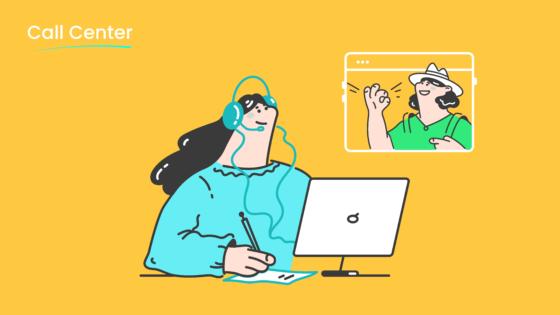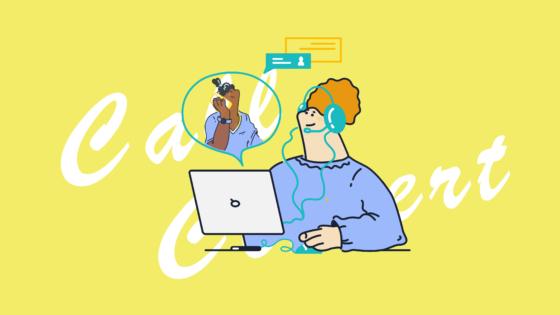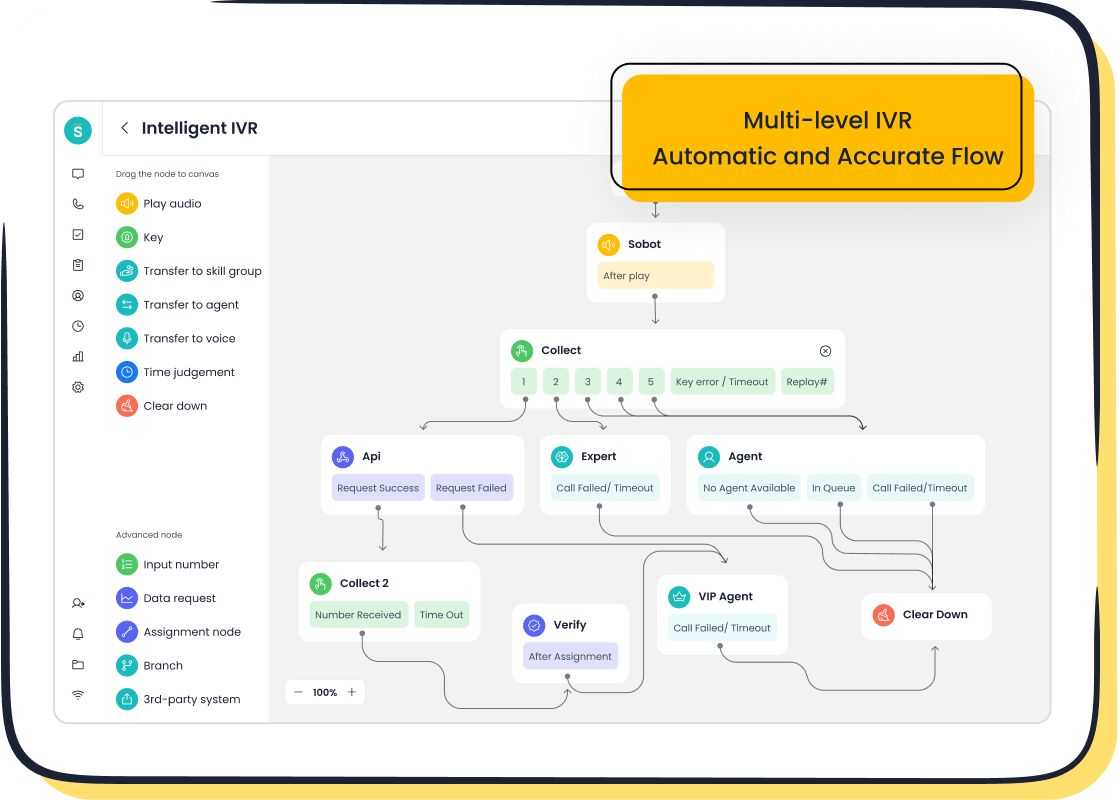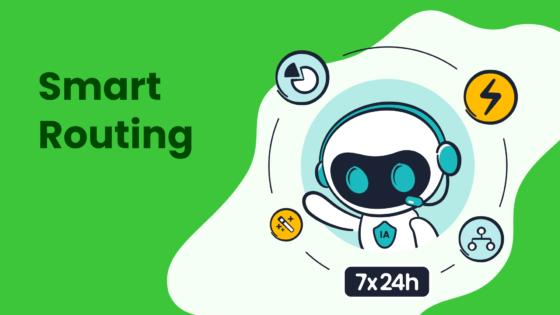How to Train Call Center Agents for Consistent Quality

You face new challenges in call center agent training as customer expectations rise and technology evolves. Today, 80% of customers value their experience as much as the product itself, and many demand seamless, personalized service. You must address issues like language barriers, fragmented communication, and the need for ethical AI. Sobot AI and the Sobot call center help you deliver consistent quality and excellent customer experience by combining innovation with a customer-centric approach.
Expectations & Goals
Service Standards
You set the foundation for call center training by defining clear service standards. These standards help your team understand what excellent customer service looks like. In the call center industry, benchmarks like Customer Satisfaction Score (CSAT), First Call Resolution (FCR), and Net Promoter Score (NPS) guide your expectations. For example, a world-class FCR rate stands at 80% or higher, while a good service level means answering 80% of calls within 20 seconds. High CSAT scores show that your customers feel valued and heard, which leads to loyalty and repeat business. You can gather this feedback through post-interaction surveys and use it to improve your training program. Sobot’s unified workspace and real-time monitoring make it easier to track these standards and ensure your team meets them every day.
Tip: Use post-call surveys to measure satisfaction and identify areas for improvement.
| KPI | Industry Standard / Benchmark | Why It Matters |
|---|---|---|
| First Call Resolution | 70-79% (good), 80%+ (world-class) | Resolves issues quickly, boosts satisfaction |
| Service Level | 80% of calls answered within 20 seconds | Ensures fast response, improves customer experience |
| Customer Satisfaction (CSAT) | Measured via post-interaction surveys | Reflects service quality and customer loyalty |
Performance Metrics
You need to measure agent effectiveness to ensure your call center training delivers results. Key metrics include service level, CSAT, NPS, and calls handled per hour. Tracking these numbers gives you a full picture of agent performance and customer experience. For example, monitoring average handle time helps you balance efficiency with quality. If agents resolve issues on the first call, you see higher satisfaction and lower costs. Sobot’s analytics tools let you monitor these metrics in real time, making it easy to spot trends and address gaps during onboarding and ongoing coaching.
- Service Level: Percentage of calls answered quickly.
- Customer Satisfaction Scores: Direct feedback from customers.
- Net Promoter Score: Measures loyalty and likelihood to recommend.
- Calls Handled per Hour: Shows agent productivity.
Note: Regularly review these metrics to adjust your training program and keep your team performing at its best.
Alignment with Company Vision
You strengthen your call center training by aligning it with your company’s vision and values. Start by breaking down your strategic goals into specific training steps. For example, if your company values innovation and customer-centricity, focus your training program on proactive problem-solving and empathy. Use branding elements, leadership messages, and job aids to reinforce your vision during onboarding. Sobot’s solutions support this alignment by providing a unified workspace and customizable workflows that reflect your brand’s priorities. When you connect training goals to business outcomes, you see higher employee engagement, reduced errors, and better customer satisfaction. Leading companies measure training effectiveness against business goals and adjust their approach regularly to stay on track.
Remember: When your training program reflects your company’s mission, your agents become true brand ambassadors.
Call Center Agent Training Essentials

Onboarding & Tools
You set the stage for success with a strong onboarding process. A well-designed onboarding program helps new agents feel confident and ready to serve customers from day one. You start by sharing your company’s mission and culture. This step helps new hires understand your values and what you expect from them. You then introduce the systems and tools they will use every day.
A comprehensive onboarding program includes several key components:
- Define clear objectives and goals that match your organization’s needs. This step sets expectations and performance targets for every new agent.
- Create an engaging and interactive training program. Cover both soft skills and tool usage to prepare agents for real-world scenarios.
- Pair new agents with experienced mentors. Mentorship gives personalized support and guidance during the onboarding period.
- Use quality assurance monitoring. Track key performance indicators (KPIs), conduct regular evaluations, and provide feedback to maintain high standards.
- Leverage advanced call monitoring and reporting tools. These tools help you track progress and improve training effectiveness.
- Offer initial and role-specific training. Teach company culture, systems, product knowledge, customer handling skills, and compliance.
- Monitor performance continuously. Set clear expectations and give regular feedback.
- Foster continuous improvement. Collect feedback from new hires and refine your onboarding program over time.
You can see how a structured onboarding program builds a strong foundation for call center agent training. For example, mentorship programs help new agents learn faster and feel supported. Regular feedback and performance reviews keep everyone on track. According to SHRM, organizations with a standard onboarding process see 50% greater new hire retention.
Sobot’s unified workspace and real-time monitoring tools make onboarding smoother. You can track agent progress, review call recordings, and provide instant feedback. These features help you spot strengths and areas for improvement early in the onboarding journey.
Tip: Use onboarding checklists to ensure every new agent completes each step of your onboarding program.

Sobot Voice/Call Center Integration
You can transform your onboarding and daily operations with Sobot Voice/Call Center. Sobot’s platform offers intelligent IVR, AI-powered Voicebot, and a unified workspace. These features automate repetitive tasks and reduce agent workload. Your agents can focus on solving complex customer issues instead of handling routine questions.
- Automation through intelligent IVR and Voicebot speeds up onboarding. New agents learn how to handle calls efficiently because the system guides them step by step.
- The unified workspace brings all communication channels together. Agents see customer data, call history, and tickets in one place. This setup streamlines workflows and helps agents resolve issues faster.
- Real-time analytics give you actionable insights. You can monitor agent performance, track KPIs, and adjust your training program as needed.
- Seamless integration with CRM systems means agents spend less time on manual data entry. This reduces errors and boosts efficiency.
- Sobot’s scalable solution supports businesses of all sizes. You can onboard new agents quickly, even as your team grows.
For example, Weee!, America’s largest online Asian supermarket, improved agent efficiency by 20% and cut resolution time by 50% after adopting Sobot’s voice product. The flexible IVR system and integrated workbench made onboarding easier and daily operations smoother. The customer satisfaction score reached 96%, showing the impact of a well-integrated system.
Note: Sobot’s AI-powered Voicebot can handle complex queries, freeing your agents to focus on high-value interactions. This technology also supports multilingual communication, making onboarding easier for diverse teams.
Soft & Hard Skills
You need to train agents in both soft and hard skills to deliver consistent quality. Hard skills are technical abilities, such as using call center software, following compliance rules, and managing tickets. Soft skills include communication, empathy, and problem-solving. Both skill sets are essential for effective call center agent training.
| Aspect | Hard Skills | Soft Skills |
|---|---|---|
| Definition | Technical, measurable abilities (e.g., software use, compliance) | Interpersonal skills (e.g., communication, empathy) |
| Nature | Clear right/wrong methods, easy to measure | Subjective, harder to define and quantify |
| Measurement Methods | Assessments, certifications, technical performance | Communication benchmarks, professionalism, customer trust |
| Training Difficulty | Easier to teach and improve | More difficult to teach and quantify |
| Impact | Essential for technical task completion | Essential for customer interaction and relationship building |
You measure hard skills through assessments and certifications. For example, you can test an agent’s ability to use Sobot’s unified workspace or follow compliance procedures. Soft skills require observation and feedback. You listen to calls, review chat transcripts, and look for signs of empathy and professionalism.
A strong training program covers both types of skills. You teach agents how to use Sobot’s tools, manage tickets, and follow workflows. You also coach them on active listening, clear communication, and building customer trust. According to a LinkedIn survey, 93% of employers consider soft skills essential or very important in hiring decisions (source).
You can use Sobot’s real-time monitoring and analytics to track skill development. For example, you can review call recordings to see how agents handle difficult conversations. You can also use data to identify top performers and share best practices across your team.
Pro Tip: Combine technical training with role-playing exercises. This approach helps agents practice both hard and soft skills in real-world scenarios.
Practical Call Center Training Methods
Shadowing & Mentorship
You can build a strong foundation for call center agent training by using shadowing and mentorship. When you pair new agents with experienced mentors, you help them learn faster and feel more confident. A structured shadowing process includes pre-call preparation, in-call observation, and post-call review. This approach gives new hires a chance to see real calls and understand how to apply communication and problem-solving skills.
- Start with a comprehensive training program that covers product knowledge, communication, and call center tools.
- Assign mentors who provide guidance, support, and regular feedback.
- Use AI-powered quality assurance tools, like those in Sobot’s platform, to score calls and deliver targeted coaching.
- Encourage trainees to take notes and ask questions during shadowing sessions.
- Include follow-up activities so agents learn how to close customer interactions properly.
Mentorship programs promote a culture of coaching and positive reinforcement. You set clear goals and give feedback often, which helps agents grow. This method reduces early-stage attrition and builds confidence before agents handle live calls. Sobot’s unified workspace and monitoring tools make it easy to review calls and provide instant feedback.
Tip: Use call shadowing worksheets to help trainees focus on key elements and reflect on their learning.
Role-Playing & Scenarios
Role-playing is a powerful part of call center training. You immerse agents in simulated customer interactions, letting them practice active listening skills, empathy, and handling difficult customers. By rotating roles, agents see both the customer and agent perspectives. This builds empathy and prepares them for real-world situations.
- Start with simple scenarios and move to more complex ones as agents gain confidence.
- Give immediate feedback after each session to reinforce good habits and address areas for improvement.
- Use realistic scenarios based on actual customer issues to make training relevant.
Industry leaders have shown that scenario-based training improves first-call resolution rates, reduces call handling times, and increases customer satisfaction. Regular workshops and measurable KPIs help you track progress and keep skills sharp. Sobot’s interactive training features, such as call recording and playback, support these exercises and make feedback more actionable.
Note: Role-playing helps agents develop problem-solving and communication skills, which are essential for success in any call center.
Microlearning Sessions
Microlearning breaks down call center training into short, focused modules. You deliver information in small chunks, making it easier for agents to absorb and retain knowledge. Research shows that microlearning improves retention and skill acquisition. For example, NuVision saw a 20% improvement in quality assurance scores and up to a 50% reduction in average handling time after adopting microlearning.
You can use microlearning to refresh skills, introduce new procedures, or reinforce coaching points. Agents access quick lessons on topics like compliance, product updates, or customer service best practices. This approach supports continuous learning without disrupting daily work.
Sobot’s platform allows you to deliver microlearning content directly within the agent workspace. You can track completion rates and use analytics to measure knowledge gains. Microlearning also boosts agent engagement and reduces attrition by making training more accessible and relevant.
Pro Tip: Combine microlearning with regular feedback and coaching to maximize skill development and agent retention.
Embedding Company Culture
Customer-Centric Values
You shape agent behavior and drive customer satisfaction by embedding customer-centric values into your call center culture. When you encourage empathy, cultural understanding, and bilingual communication, your agents deliver genuine, personalized service. This approach goes beyond scripts and helps agents connect with customers on an emotional level.
- Empathy training and cultural competence allow agents to address both emotional and practical needs, which leads to higher satisfaction and loyalty.
- Bilingual communication builds trust, reduces misunderstandings, and strengthens the customer experience, especially in diverse markets.
- Feedback loops and continuous improvement based on customer input refine agent behavior and service quality.
- Active listening and a supportive tone improve the quality of every customer interaction.
Sobot’s omnichannel solution supports these values by enabling agents to access customer history and preferences in real time, making every conversation more meaningful.
Team Collaboration
You foster a high-performing team by promoting collaboration. Research shows that teams solve problems better than individuals because they combine skills and knowledge. In call centers, teamwork leads to faster resolutions and a better customer experience. Collaboration also encourages innovation, reduces stress, and increases job satisfaction.
| Proven Benefit | Explanation | Relevance to Call Centers |
|---|---|---|
| Improved Problem-Solving | Teams solve complex issues together more effectively. | Faster resolution of customer issues. |
| Enhanced Decision-Making | Diverse perspectives lead to informed decisions. | Better service quality and efficiency. |
| Increased Creativity & Innovation | Collaboration sparks new ideas. | Improves customer interactions and processes. |
| Trust and Transparency | Sharing information fosters trust. | Builds a positive work environment. |
| Skill Sharing and Learning | Peer training diversifies skill sets. | Enables multi-functional roles. |
| Accountability | Team members take ownership. | Ensures reliability in service delivery. |
Sobot’s unified workspace makes collaboration easy by allowing agents to share information and support each other in real time.
Recognition & Motivation
You improve retention and boost morale by recognizing and motivating your agents. Recognition programs, tangible rewards, and personalized appreciation all play a role in making agents feel valued. When you celebrate achievements, you create a positive work culture that supports agent well-being and loyalty.
| Strategy Category | Description | Impact on Retention | Example |
|---|---|---|---|
| Recognition Programs | Programs like “Agent of the Month” or “Top Performer of the Week” | Boosts morale, increases loyalty | “Agent of the Month” with gift card rewards |
| Tangible Rewards | Bonuses, gift cards, extra paid time off | Motivates agents through appreciation | Gift cards as tokens of appreciation |
| Personalized Appreciation | Handwritten notes or team announcements | Enhances motivation | Personalized gifts |
| Positive Work Culture | Inclusivity, collaboration, well-being programs | Builds loyalty, improves morale | Employee Appreciation Week with team lunches |
Timely and visible recognition, such as milestone awards or experiential rewards, has a strong impact on retention. Sobot’s analytics help you track performance and identify top performers, making it easier to reward excellence and maintain a motivated team.
Ongoing Support & Feedback
Real-Time Coaching
You drive agent success by providing real-time coaching and instant feedback during live calls. This approach helps agents correct mistakes on the spot and build confidence. Start by choosing a coaching model that fits your team, such as GROW or CLEAR. Use in-call coaching to give real-time feedback, supported by AI tools and supervisor monitoring. Gamify coaching with leaderboards and challenges to boost engagement and retention. Microlearning sessions, lasting just a few minutes, reinforce key skills and make learning stick. Sobot’s unified workspace and analytics make it easy to spot coaching opportunities and deliver targeted support. You can also gather employee feedback through surveys to improve your coaching process and address training gaps.
Tip: Gradually introduce new technology and promote a culture that values coaching. This helps agents adapt and see the benefits of continuous improvement.
Quality Assurance
You ensure consistent service by using quality assurance programs that measure key performance indicators like Customer Satisfaction and First Call Resolution. Calibration sessions align your team on quality standards, while self-evaluation encourages agents to review their own calls. This process increases self-awareness and makes agents more open to coaching. Sobot’s real-time monitoring tools analyze calls for sentiment and compliance, providing actionable feedback for immediate improvement. Regular calibration and self-evaluation sessions prevent scoring drift and support comprehensive coaching, which leads to higher retention and better customer experiences. The Weee! case shows how flexible quality assurance, paired with Sobot’s analytics, can raise customer satisfaction to 96%.
Analytics & Improvement
You unlock continuous growth by using analytics to identify training needs and improve agent performance. Speech analytics reveal keywords, sentiment, and compliance issues, guiding focused coaching and feedback. Predictive analytics forecast agent performance and help you design targeted training programs. Sobot’s omnichannel solution centralizes data from all channels, making it easy to track trends and visualize progress. By combining customer and agent feedback, you create a feedback loop that drives ongoing improvement and higher retention. Scorecards and AI-driven insights help you recognize top performers and address skill gaps, ensuring your team delivers consistent, high-quality service.
Contact Center Training for Continuous Growth

Knowledge Base Access
You empower your agents when you give them access to a comprehensive knowledge base. With the right resources, agents can find answers quickly and accurately. This reduces average handle time and improves first-call resolution rates. Studies show that agents using a well-structured knowledge base resolve issues about 38% faster and feel 65% more confident in their roles. A strong knowledge base can achieve an 85% search success rate, helping agents solve problems 40% faster and saving up to two minutes per call.
When you integrate your knowledge base with CRM systems, agents see customer information and helpful articles in one place. Sobot’s unified workspace brings these tools together, making contact center training more effective. AI-powered suggestions guide agents to the right answers in real time. This ensures your team delivers consistent and reliable service, which builds trust with customers. You also support ongoing improvement by analyzing search queries and agent feedback to update your resources.
Tip: Keep your knowledge base updated and encourage agents to suggest new articles or improvements.
Self-Directed Learning
You help agents grow when you encourage self-directed learning as part of your contact center training. Coaching plays a key role here. Instead of just telling agents what to do, you support them as they build skills and confidence on their own. Start with tailored training and mentoring. Give agents the chance to handle calls independently and make decisions. Foster a culture where feedback flows both ways—between agents and managers.
Here are some effective strategies for self-directed learning:
- Set clear goals tied to customer service metrics.
- Use shadowing programs so agents can learn from experienced peers.
- Promote collaboration by sharing notes and insights.
- Build an internal help center with guides and scripts.
- Offer regular feedback and ask agents for input on training programs.
- Provide incentives for agents who take initiative.
- Cross-train agents with other teams to broaden skills.
- Allow asynchronous training with recorded sessions and searchable resources.
Sobot’s platform supports these strategies by offering an internal help center and easy access to training materials, making contact center training more flexible and agent-driven.
Adapting to Trends
You keep your team ahead by adapting contact center training to new trends and technologies. Leading call centers assess training needs before rolling out new tools. They introduce changes step by step, which helps agents adjust smoothly. Continuous training and feedback loops ensure your staff stays competent and adaptable.
You should design your training programs to be agile. Use real customer feedback and advanced analytics to spot skill gaps. Peer reviews and coaching sessions help foster a culture of improvement. Sobot’s analytics and real-time monitoring make it easy to track performance and identify areas for growth.
Ongoing contact center training brings long-term benefits. Employees who receive continuous training are more likely to stay with your company. Proper training also boosts customer satisfaction and loyalty. Customers spend more when they interact with knowledgeable agents. Consistent training helps your team deliver a uniform experience, which strengthens your brand reputation and attracts new talent.
Note: Continuous learning not only improves agent skills but also drives innovation and keeps your contact center competitive.
You can achieve consistent call center agent training by combining scenario-based learning, personalized coaching, and real-time support. Use technology like Sobot’s unified workspace and AI-powered analytics to streamline workflows and provide instant feedback. Ongoing support, clear goals, and a customer-centric mindset drive agent engagement and performance. Ready to elevate your contact center training? Explore how Sobot’s solutions help you deliver quality at scale. Learn more at Sobot.io.
FAQ
What is the most important part of call center agent training?
You need to focus on both soft and hard skills. Soft skills like empathy and communication drive customer satisfaction. Hard skills, such as using Sobot’s unified workspace, help agents resolve issues quickly. Combining both leads to consistent call center training results.
How does Sobot support call center agent training?
Sobot provides a unified workspace, AI-powered Voicebot, and real-time analytics. These tools streamline onboarding and daily operations. You can track agent progress, review calls, and deliver feedback instantly. This approach improves contact center training and boosts customer satisfaction.
How often should you update your call center training program?
You should review and update your call center agent training every quarter. Customer needs and technology change quickly. Regular updates ensure your team stays current. Sobot’s analytics help you spot trends and adjust your contact center training for better results.
Can Sobot help improve customer satisfaction scores?
Yes. Sobot’s call center solutions, like intelligent IVR and real-time monitoring, help agents resolve issues faster. For example, Weee! increased agent efficiency by 20% and reached a 96% customer satisfaction score after using Sobot’s platform. Read more.
What are the benefits of using analytics in call center training?
Analytics show you where agents excel and where they need help. You can use Sobot’s analytics to track KPIs, monitor call quality, and identify training gaps. This data-driven approach leads to better call center agent training and higher customer satisfaction.
See Also
Top Strategies For Effective Call Center Quality Control
Comprehensive Overview Of Software For Call Center QA
Essential Principles Of Quality Management Systems In Call Centers
Ways To Improve Call Center Results Through Monitoring Tools
